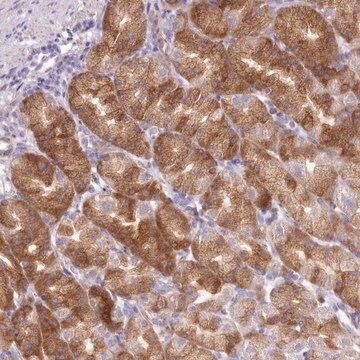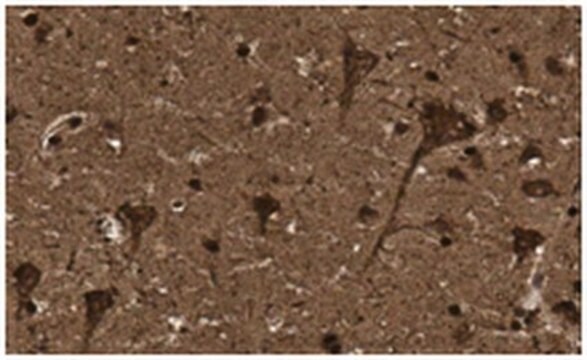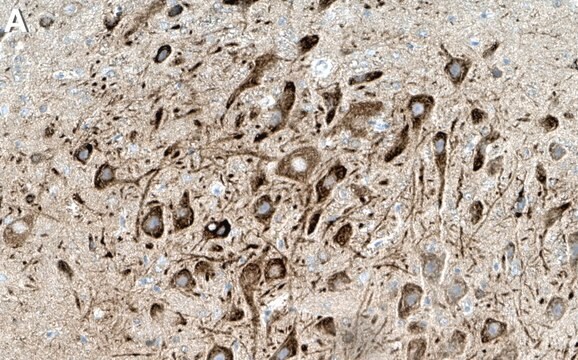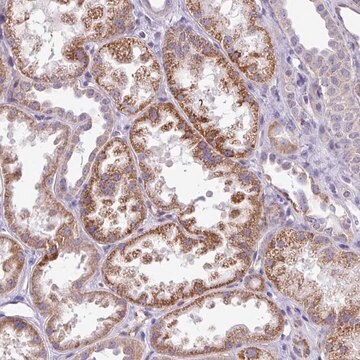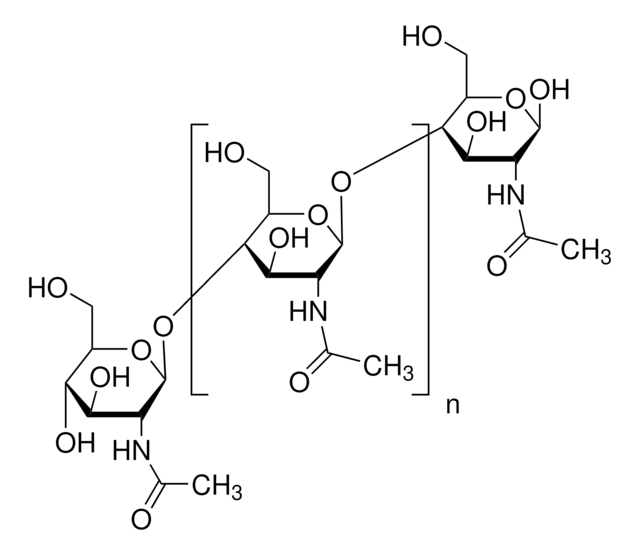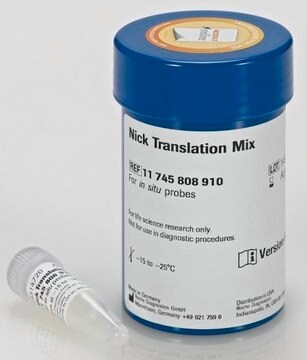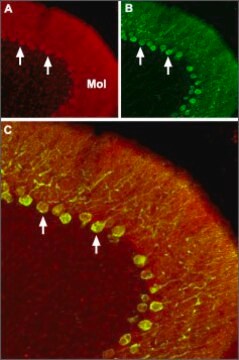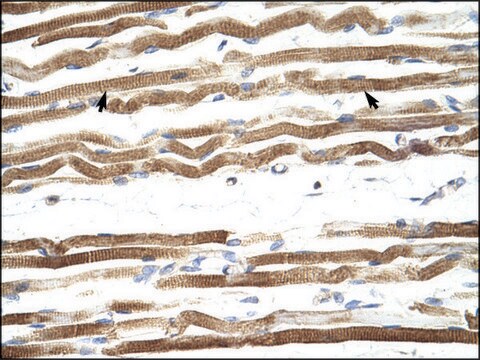MAB2226
Anti-Piccolo Antibody, clone 4G3.3
clone 4G3.3, from mouse
Synonyme(s) :
presynaptic cytomatrix protein, Aczonin
About This Item
WB
western blot: suitable
Produits recommandés
Source biologique
mouse
Niveau de qualité
Forme d'anticorps
purified antibody
Type de produit anticorps
primary antibodies
Clone
4G3.3, monoclonal
Espèces réactives
mouse
Réactivité de l'espèce (prédite par homologie)
human (based on 82% homology), rat (92% homology)
Technique(s)
immunohistochemistry: suitable (paraffin)
western blot: suitable
Isotype
IgMκ
Numéro d'accès NCBI
Numéro d'accès UniProt
Conditions d'expédition
wet ice
Modification post-traductionnelle de la cible
unmodified
Informations sur le gène
human ... PCLO(27445)
mouse ... Pclo(26875)
Description générale
Spécificité
Immunogène
Application
Representative images from a previous lot.
Piccolo staining pattern/morphology on mouse brain tissue/cerebellum. Tissue was pretreated with citrate pH 6.0, antigen retrieval. A previous lot of the antibody was diluted to 1:300, using IHC-Select Detection with HRP-DAB. Immunoreactivity is localized to the synaptic junction of neurons in the granular layer and Purkinje cells(arrow).
Neuroscience
Synapse & Synaptic Biology
Qualité
Description de la cible
Forme physique
Stockage et stabilité
Remarque sur l'analyse
Rat brain lysate, mouse cerebellum
Autres remarques
Clause de non-responsabilité
Vous ne trouvez pas le bon produit ?
Essayez notre Outil de sélection de produits.
Code de la classe de stockage
12 - Non Combustible Liquids
Classe de danger pour l'eau (WGK)
WGK 2
Point d'éclair (°F)
Not applicable
Point d'éclair (°C)
Not applicable
Certificats d'analyse (COA)
Recherchez un Certificats d'analyse (COA) en saisissant le numéro de lot du produit. Les numéros de lot figurent sur l'étiquette du produit après les mots "Lot" ou "Batch".
Déjà en possession de ce produit ?
Retrouvez la documentation relative aux produits que vous avez récemment achetés dans la Bibliothèque de documents.
Notre équipe de scientifiques dispose d'une expérience dans tous les secteurs de la recherche, notamment en sciences de la vie, science des matériaux, synthèse chimique, chromatographie, analyse et dans de nombreux autres domaines..
Contacter notre Service technique